Explore our resources
What is climate justice and why is it Important?
Overview
Climate justice is a concept that recognises that climate change disproportionately affects communities who often contribute least to the problem but bear the brunt of its consequences. It aims to address ethical, social, and political dimensions of climate change, emphasising responses that are more fair and equitable than the climate crisis and it’s causes.
Content
1. What does climate justice mean to the Lived Experiences Advisory Group (Justice LEAG)?
The Climate Justice Union’s Justice Lived Experience Advisory Group (LEAG) sits at the heart of the Climate Justice and Resilience Toolkit development. This document captures the contributions and insights from the Justice LEAG, whose members, drawn from communities on the frontlines of the climate crisis, have shared their lived experiences to shape the Toolkit. Their work highlights the importance of ensuring that climate justice includes everyone’s access to essential resources like shelter, food, water, healthcare, and safety—not just during climate disasters but before and after them as well.
Key themes identified by the Justice LEAG include addressing systemic inequities, expanding the definition of “disasters” to include cultural and environmental impacts, ensuring community leadership in decision-making, and challenging bureaucratic barriers. The LEAG also stresses that climate justice is an ongoing process, not a fixed outcome. Achieving it requires a shift in power dynamics, prioritising community-led solutions, and continued advocacy. This document summarises their ongoing discussions and the ideas they are working towards to achieve climate justice.
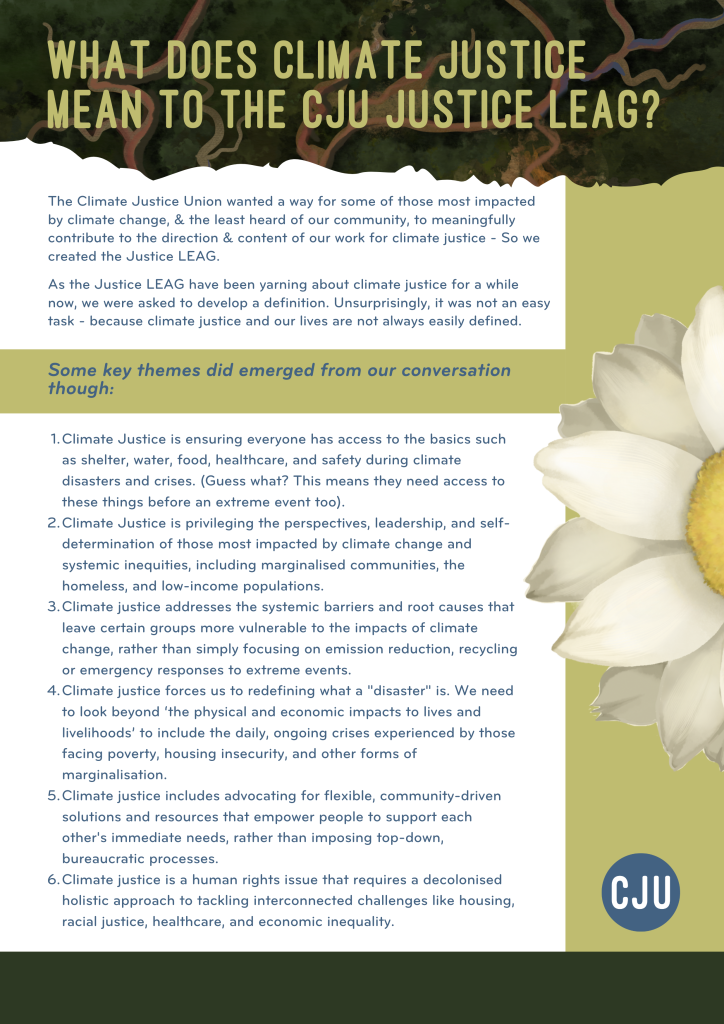
2. Exploring the consequences of climate change
This graphic explores the cascading impacts of climate change on people with disabilities, chronic illnesses, and people experiencing poverty. These impacts include increased stress, pain, injury, displacement, lack of vital healthcare, respiratory illness, and isolation. For many, these challenges are compounded by barriers to accessing support and resources, leaving them disproportionately vulnerable to climate-related risks.
This document is part of a broader body of work, developed through discussions and conversations held online and in person during 2023 and 2024. It represents a collective effort by community members and Climate Justice Union contributors with lived experience of disability, poverty, and chronic illness. While it offers insights and shared stories, it remains an ongoing and evolving project aimed at amplifying the voices of those directly impacted by these challenges.
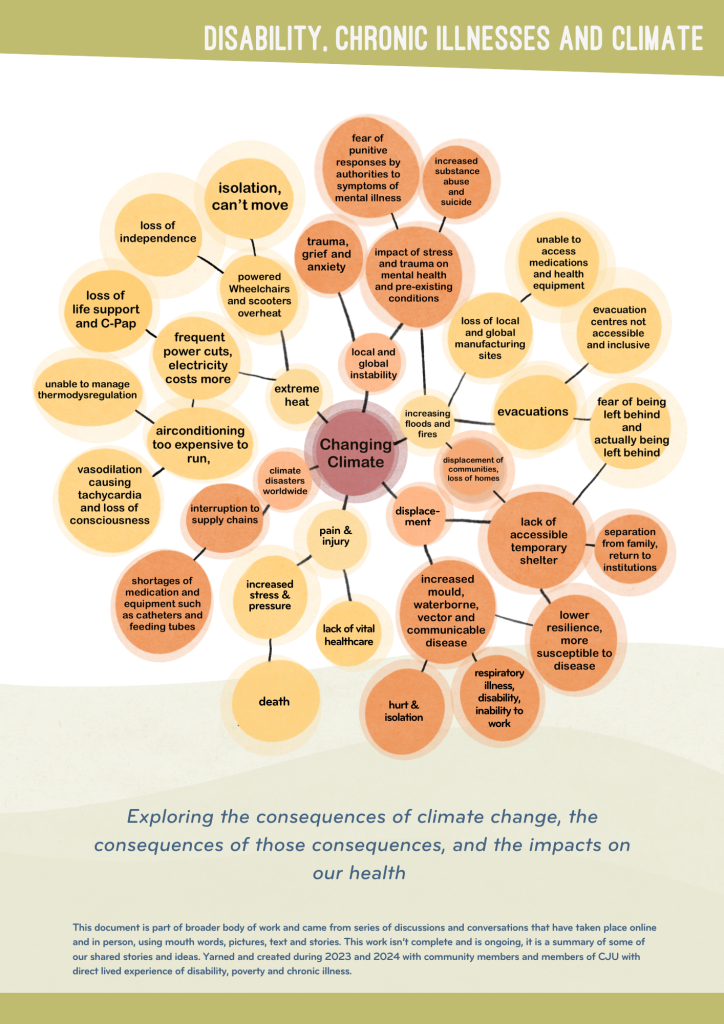
3. What is climate justice?
Climate justice is a concept that can feel both vast and complex. At its core, it involves responding to and preparing for the impacts of climate change in ways that protect communities and Country, ensuring that no one is left behind. While this may seem straightforward, achieving true climate justice requires much deeper consideration of social, environmental, and cultural factors.
The below document and the included dimensions that underpin climate justice has been created by Kylie Wrigley as part of her PhD in partnership with Climate Justice Union and in partnership with People with Lived Experiences.
The illustration within the document below captures the essence of what organising for climate justice entails. Although the image is place-based and specific to Noongar Country, its themes are universal and can serve as a valuable resource for any organisation or community working towards climate justice.
The illustration features Dangalang, the paper daisy, which blooms in vibrant colours on Noongar Country during the Djilba and Kambarang seasons. These resilient flowers thrive in sandy, nutrient-poor soils and, like climate justice activists in Western Australia, they endure tough conditions and continue to flourish, creating something beautiful when working together.
At the centre of the flower lies the foundation of this work – a commitment to being critical, transformative, and care-full in our approach. The petals represent the principles and frameworks of climate justice, including decolonisation, structural change, First Nations justice, disability justice, and social and environmental justice. Surrounding these principles are the seven dimensions of climate justice, which guide our actions and goals. The outermost layer holds the vision of climate justice for all living things – current and future generations, as well as Country itself.
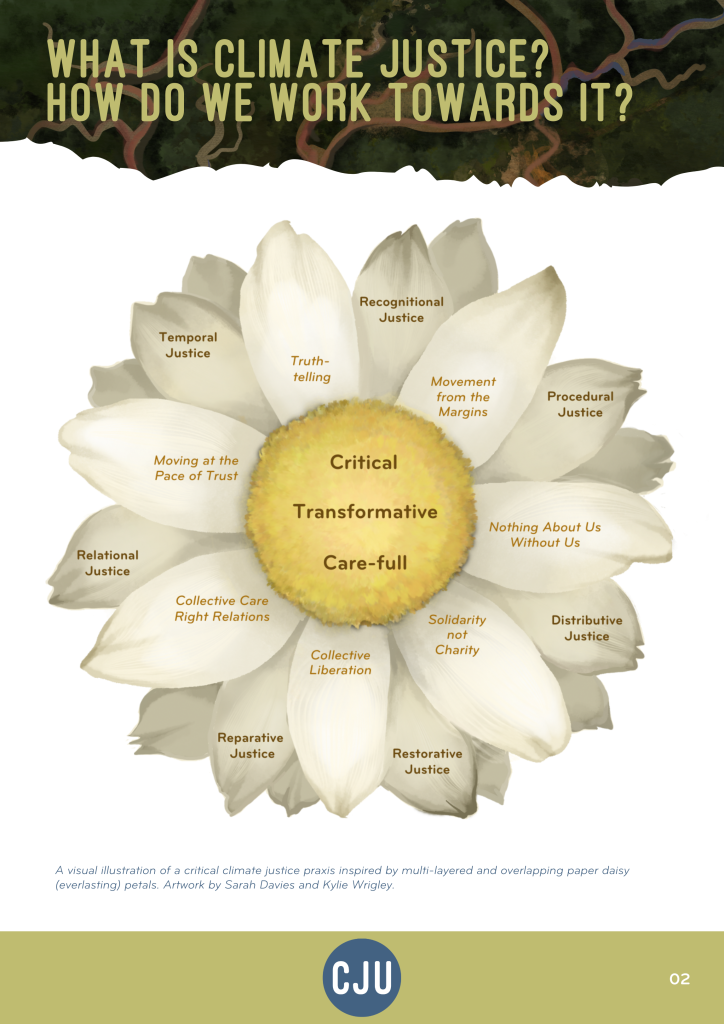
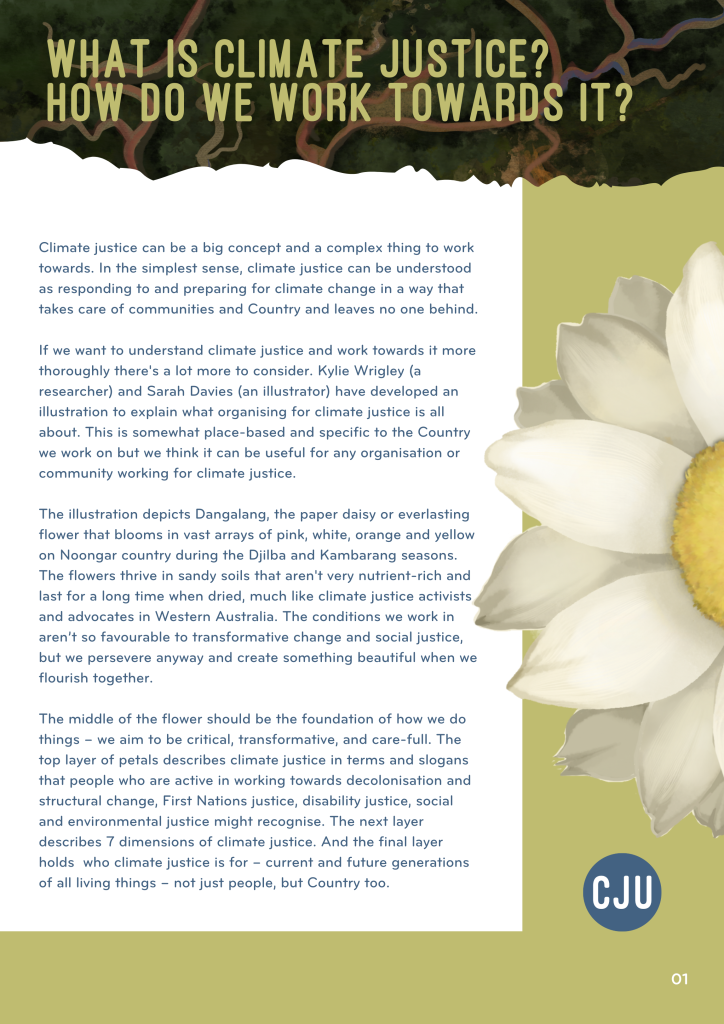
4. Intersectional climate justice conceptual framework
Source: A bibliometric and topic analysis of climate justice: Mapping trends, voices, and the way forward
Authors: Meg Parsons, Quinn Asena, Danielle Johnson, Johanna Nalau
This illustration of the intersectional climate justice conceptual framework highlights how climate change disproportionately impacts marginalised communities. Central to this framework is the recognition of the persistent colonial structures within climate discourse, often sidelining or misrepresenting the voices of those most affected by climate injustices. This misrepresentation perpetuates existing power dynamics, diminishing the role of Indigenous peoples, women, and other marginalised groups.
The framework incorporates five key dimensions of justice—distributive, procedural, recognitional, corrective, and temporal—offering a more holistic approach to climate justice.
It depicts the need for climate justice frameworks to integrate critical social theories, such as intersectional feminism, anti-colonial, and decolonial perspectives, to better address the intersectional vulnerabilities faced by diverse communities. It calls for a more inclusive, participatory approach to climate policy and governance, one that genuinely values the experiences, knowledge, and leadership of affected communities.
This approach challenges the status quo of top-down climate governance by emphasising the importance of co-design and co-production in addressing climate injustices.
Ultimately, the goal is to forge a climate justice framework that not only addresses environmental concerns but also dismantles the social structures that perpetuate inequality, ensuring that climate mitigation and adaptation efforts are equitable and just for all communities.
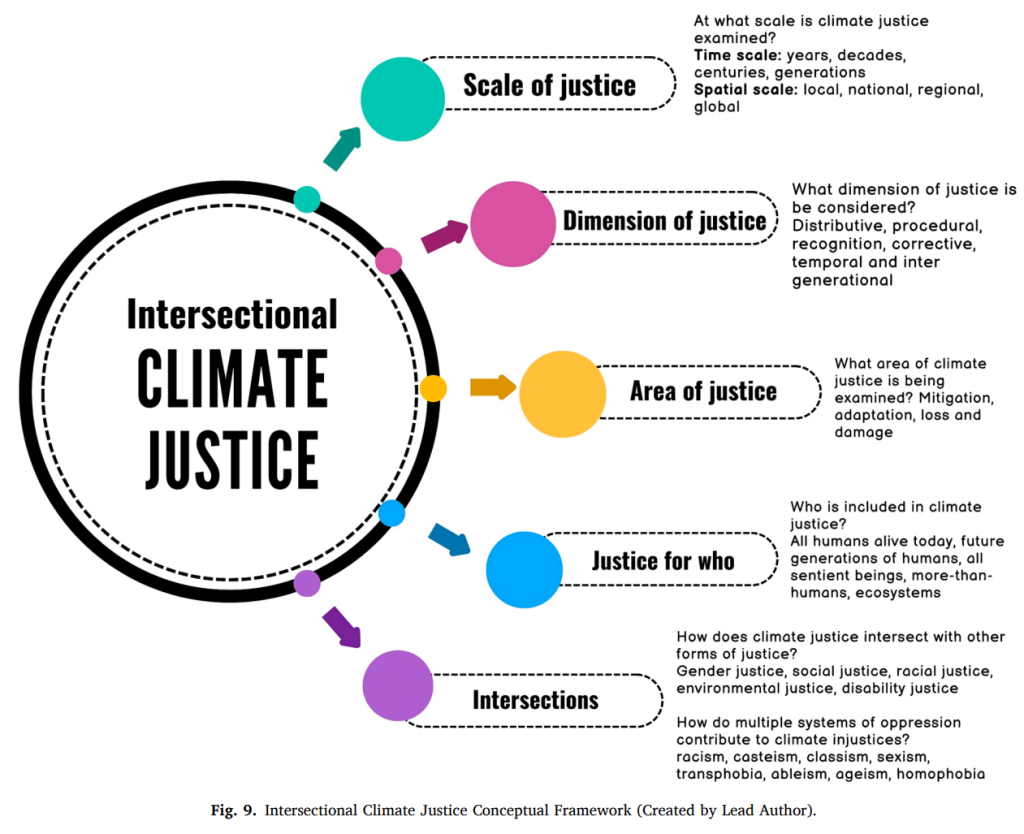
Provide us with your feedback
Your feedback helps us improve! Please use this short form to share your thoughts on this process tool. Your insights make a big difference in refining and enhancing the experience for everyone.
